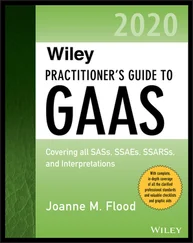Example 7.25: TaxationThe Company accounts for income taxes in accordance with ASC Topic 740, Income Taxes . ASC 740 requires a company to use the asset and liability method of accounting for income taxes, whereby deferred tax assets are recognized for deductible temporary differences, and deferred tax liabilities are recognized for taxable temporary differences. Temporary differences are the differences between the reported amounts of assets and liabilities and their tax bases. Deferred tax assets are reduced by a valuation allowance when, in the opinion of management, it is more likely than not that some portion, or all of, the deferred tax assets will not be realized. Deferred tax assets and liabilities are adjusted for the effects of changes in tax laws and rates on the date of enactment.
Under ASC 740, a tax position is recognized as a benefit only if it is “more likely than not” that the tax position would be sustained in a tax examination, with a tax examination being presumed to occur. The amount recognized is the largest amount of tax benefit that is greater than 50% likely of being realized on examination. For tax positions not meeting the “more likely than not” test, no tax benefit is recorded. The Company has no material uncertain tax positions for any of the reporting periods presented.
Example 7.26: Intangible Assets, NetIntangible assets are recorded at cost less accumulated amortization. Amortization is calculated on a straight‐line basis over the following estimated useful lives:
Logistics platform—three years
The Company evaluates intangible assets for impairment whenever events or changes in circumstances indicate that the assets might be impaired. There was no such impairment as of June 30, 20X8.
Example 7.27: GoodwillGoodwill represents the excess of purchase price over the underlying net assets of businesses acquired. Under accounting requirements, goodwill is not amortized but is subject to annual impairment tests. At August 31, 20X8, the Company recorded goodwill of $150,618 and $92,989, respectively, related to its acquisition of Blake Health, Inc. during the fiscal year ended August 31, 20X7 and Global Fitness Leaders during the fiscal year ended August 31, 20X8. As of August 31, 20X8 and 20X7, the Company performed the required impairment reviews. Based on its reviews at August 31, 20X8 and 20X7, the Company believes there was no impairment of its goodwill.
Example 7.28: Goodwill and Intangible AssetsGoodwill and other identifiable intangible assets with indefinite lives that are not being amortized, such as trade names, are tested at least annually for impairment and are written down if impaired. Identifiable intangible assets with finite lives are amortized over their estimated useful lives and are reviewed for impairment whenever facts and circumstances indicate that their carrying values may not be fully recoverable. The intangible assets with definite lives are being amortized over its estimated useful lives of 5 years using the straight‐line method.
The Company operated an online gaming site featuring sophisticated playing zones, game broadcasts with software analyses and top analysts' commentaries, education and other chess oriented resources. Intangible assets represented the amount incurred by the Company related to the development of the online chess gaming website.
Under ASC 985‐20, there are two main stages of software development. These stages are defined as:
1 (A) When the technological feasibility is established, and
2 (B) When the product is available for general release to customers.
Costs incurred by the Company up to stage A have been expensed while costs incurred to move from stage A to stage B have been capitalized.
The Company evaluates the recoverability of the infinite‐lived intangible assets for possible impairment whenever events or circumstances indicate that the carrying amount of such assets may not be recoverable. Recoverability of these assets is measured by a comparison of the carrying amounts to the future undiscounted cash flows the assets are expected to generate. If such review indicates that the carrying amount of intangible assets is not recoverable, the carrying amount of such assets is reduced to fair value.
During the year ended December 31, 20X7, the intangible asset was written off based on management's review and evaluation of its recoverability. With respect to goodwill, during the year ended December 31, 20X8, the Company has identified no circumstances which would call for further evaluation of goodwill impairment.
Example 7.29: Software Development CostsThe costs incurred in the preliminary stages of development are expensed as incurred. Once an application has reached the development stage, internal and external costs, if direct and incremental, are capitalized until the application is substantially complete and ready for its intended use. These costs are amortized using the straight‐line method over the estimated economic useful life of 5 years starting from when the application is substantially complete and ready for its intended use.
Example 7.30: Inventories and Cost MethodInventories, consisting of finished goods, inventories in transit, and raw materials, are stated at the lower of cost and net realizable value. Cost is determined using weighted‐average costs, and includes all costs incurred to deliver inventory to the Company's distribution centers including freight, nonrefundable taxes, duty, and other landing costs.
The Company makes provisions as necessary to appropriately value goods that are obsolete, have quality issues, or are damaged. The amount of the provision is equal to the difference between the cost of the inventory and its estimated net realizable value based upon assumptions about future demand, selling prices and market conditions. In addition, the Company provides for inventory shrinkage based on historical trends from actual physical inventory counts. Inventory shrinkage estimates are made to reduce the inventory value for lost or stolen items. The Company performs physical inventory counts and cycle counts throughout the year and adjusts the shrink reserve accordingly.
Example 7.40: Inventories—Merchandise InventoriesMerchandise inventories are valued at lower of cost or market using the last‐in, first‐out (LIFO) retail inventory method. Under the retail inventory method, inventory is segregated into departments of merchandise having similar characteristics, and is stated at its current retail selling value. Inventory retail values are converted to a cost basis by applying specific average cost factors for each merchandise department. Cost factors represent the average cost‐to‐retail ratio for each merchandise department based on beginning inventory and the annual purchase activity. At January 2, 20X3 and January 3, 20X2, merchandise inventories valued at LIFO, including adjustments as necessary to record inventory at the lower of cost or market, approximated the cost of such inventories using the first‐in, first‐out (FIFO) retail inventory method. The application of the LIFO retail inventory method did not result in the recognition of any LIFO charges or credits affecting cost of sales for 20X3, 20X2 or 20X1. The retail inventory method inherently requires management judgments and estimates, such as the amount and timing of permanent markdowns to clear unproductive or slow‐moving inventory, which may impact the ending inventory valuation as well as gross margins.
Permanent markdowns designated for clearance activity are recorded when the utility of the inventory has diminished. Factors considered in the determination of permanent markdowns include current and anticipated demand, customer preferences, age of the merchandise and fashion trends. When a decision is made to permanently markdown merchandise, the resulting gross margin reduction is recognized in the period the markdown is recorded.
Читать дальше












